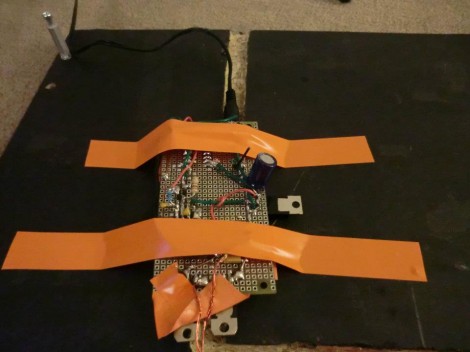
This is an advanced inductive charging system into which [David McIntosh] has put a lot of hard work. It uses the same coil-based concepts that we’ve seen in other DIY systems, but the game changer is a communications function that just isn’t found in home brew versions of the hardware. It lets the receiver (device being charged) give feedback to the transmitter by rolling another signal into the EM field being generated.
Do why would you need feedback? Well, if the two coils are not positioned well, the power produced on the receiving end can vary greatly. For instance, you may have the wrong voltage because the coils are not balanced. Or there may not be enough current to properly start charging. The feedback system is designed to let the sending unit change frequency to try to account for physical orientation, or to shut itself off if the charge is just not possible. This is done in expensive commercial devices, and that’s what [David] used as his model.















Awesome writeup — very detailed. Nice work.
P.S. Can you program/debug the MSP430Fxxxx devices with the TI MSP430G LaunchPad? I see that the “transmitter” uses an MSP430Fxxxx and he mentions using the LaunchPad as a programming tool. I thought perhaps it would only work with the Value Line devices. Is there a code/RAM size limit for the target MCU?
Yes, I’ve been programming a 430F2274 chip with the $4.30 launchpad kit myself. there is a code limit that’s always present without a license: 16KB
Is there a code limit when you aren’t using TI’s IDE? I am using the msp430-gcc toolchain and mspdebug on Ubuntu. No code size limits there. Unless the TI LaunchPad debug chip somehow knows about licensing.
OOO, this is awesome. I am looking for a wireless solution to charge my robot.
I’d rather be bull’s-eyeing Womp rats in my T-16 back home.
Speaking as a layman, what about using a second coil to transmit binary data like an RFID chip? The data coil could be located inside the power coil, in an area where the field lines don’t penetrate, such as near the center, so as not to increase the device footprint.
Very nice.